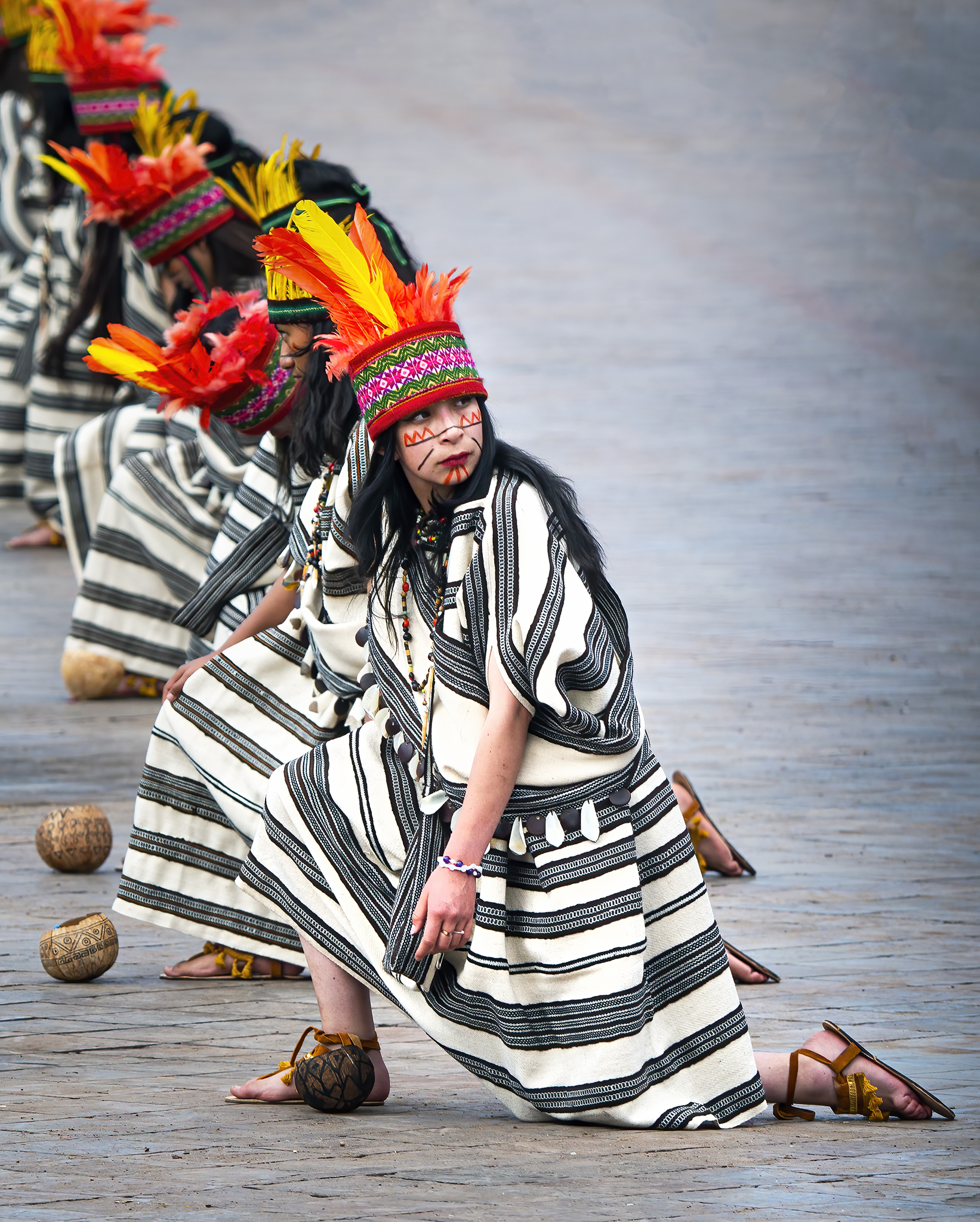The first thing to be said about Inti Raymi, Cusco’s biggest festival of the year, is that it is utter mayhem. The sheer number of people – locals and tourists alike – make it largely impossible to get a decent view of any of the proceedings. It’s a spectacular event, but to be honest, if you’re planning on visiting Cusco for Inti Raymi, be sure to arrive a week or two before it and enjoy all the other festivities in the lead-up. In general, these celebrations have all the same colour, music and dancing, but without the hordes of tourists.

Alternatively, if you’re set on making the most of Inti Raymi itself, you’ll probably want to splash out on the ‘paid seats’ which give you a front row view of all the action – but you won’t get them on a backpacker budget. If you’re not going to pay for these, and you’re not vertically gifted like me, your final option is to purchase a plastic stool for around 10 soles (~AU$3.50) from one of the many street vendors on the day. In theory, these allow you to see over the crowds in front of you, but be aware that everyone else is going to have the same idea.
Now I know what you’re thinking – if I get there early enough, I’ll be able to get the best view. The problem with this plan is that Inti Raymi takes place in three stages. The events begin at Qorikancha, an ancient Inca temple; from there they proceed to the Plaza de Armas, the town square; and finally they culminate at Saqsaywaman, the set of Inca ruins that overlook the city.




If you’re planning to arrive early and secure a spot, you’ll have to pick one of these places and be content with a bad view (or no view) for the other two. Should you do this, I’d recommend the front of the cathedral in the Plaza de Armas, as this is where you’ll get closest to the action.
Alright, now that we’ve got the practical side of things out of the way, let’s learn what Inti Raymi is all about.



Inti Raymi is an ancient Inca festival which venerates the sun god, Inti. It occurs annually on June 24th and celebrates the winter solstice and the Inca New Year. Originally, it lasted for nine days, and involved a wide range of dances, processions and animal sacrifices.
The last Inti Raymi to be carried out by the Inca was in 1535, at which point the ceremony was outlawed by the Spanish Catholic colonisers. After this, the festival lay dormant for more than 400 years, until a historical reconstruction took place in 1944. This tradition has continued ever since, growing grander and with increased international attention every year. The celebration is performed entirely in Quechua, the language of the Inca, and actors address the crowd as important figures in Inca folklore.
The procession of Inti Raymi begins at Qorikancha, the Temple of the Sun. Records show that when the Spanish arrived in Cusco, Qorikancha was one of the most incredible sights that they had ever laid eyes upon. A huge temple, dedicated to Inti rose above the city. Its walls were covered in gold plating, and stunning statues of gold and silver lined its walkways. Perhaps most notably, Qorikancha was also home to the mummified bodies of the Inca’s most important individuals – all dressed in delicately ornate clothes, and seated upon golden thrones.
Naturally, none of this survived the process of colonisation. The gold and silver was plundered, and the temple was destroyed – replaced by the Santo Domingo Church, which remains standing today. However, the stone foundations upon which it was built remain as lasting evidence of the Inca architecture, and mark the starting point of the Inti Raymi celebrations.


The sun god Inti is arguably the most important deity in the traditions of the Inca. The Sapa Inca, the emperor of the Inca people, was believed to be a living representative of Inti, and commanded one of the largest and most sophisticated empires in the world at the time. As the Inca Empire expanded, huge swathes of the kingdom were set aside for Inti. Each conquered province was expected to dedicate a third of their land to the sun god, and people would spend large portions of their lives working in Inti’s name.
Legend has it that Inti ordered the construction of a grand city, which was to be the Inca capital. This city was Cusco, and it was said to have been covered in gold upon the arrival of the Spanish in the 1500s. Indeed, many believe that the mythical city of El Dorado was actually just the gold-clad city of Cusco.
It has been argued that in the final years of the Inca Empire, the emperor was increasingly using his association with Inti for exploitative means, in order to increase his own power and wealth. It’s worth noting that while we tend to romanticise the Inca, it is likely that they were just as expansionist and imperialist as the Spanish colonisers that conquered them.

The other significant deity involved in the festival of Inti Raymi is Pachamama, or Mother Earth. In the folklore of the indigenous people of the Andes more broadly, Pachamama is seen as an all-encompassing representation of Earth, nature and life.
Pachamama is regarded as Inti’s female counterpart, and depending on which myths you look at, Pachamama was either Inti’s mother or his wife (or perhaps even both). She therefore plays a vital role in the festivities of Inti Raymi.
The Inca believed that Pachamama controlled the success of the harvests, as well as natural disasters such as earthquakes. As such, the ancient Inti Raymi festivals contained huge numbers of animal sacrifices in order to thank Pachamama, and obtain her blessing for harvests of the upcoming year.



After beginning at Qorikancha and passing through the Plaza de Armas, the celebratory procession slowly makes its way up the mountain to Saqsaywaman, where the final stage of Inti Raymi takes place. By far the most extravagant part of the day, the surrounding hills are flooded with thousands of people, each trying to get the best view of the hundreds of performers taking part in the ceremony.
After hours of carefully choreographed routines, the performance concludes with (quite literally) its coup de grâce – a llama sacrifice. A dozen or so of the sacred camelids are penned up in the corner of the ancient Inca ruins, before one is selected to be the star of the show.
The lucky llama is carried by a troop of Inca warriors and pinned down on the stone alter. Inti approaches and after some prayer, brandishes a blade and slashes the llama’s throat. As if this wasn’t dramatic enough, he then reaches down and, with some struggle, yanks out the llama’s heart and holds it up to the adoring crowd. Finally, he walks the heart over to the sacrificial fire, and ceremoniously drops it into the flames.
I should note at this point that while the llama is very much real, the rest of the sacrificial process is entirely simulated. As realistic as the fake heart looks at the time, I am pleased to report that the llama gets to walk away happily at the end of the show.
The offering marks the end of the official Inti Raymi ceremony, but in true Peruvian fashion, the party continues long into the night.

Inti Raymi is the culmination of one of the most impressive displays of culture, not just in Peru, but globally. While it can be challenging and overwhelming at times to navigate the enormous crowds, they are also a testament to the impressive nature of an ancient ceremony that has been revived in the most spectacular of fashions. Should you ever get the chance to visit Cusco in June – be sure to soak up every second of it!


